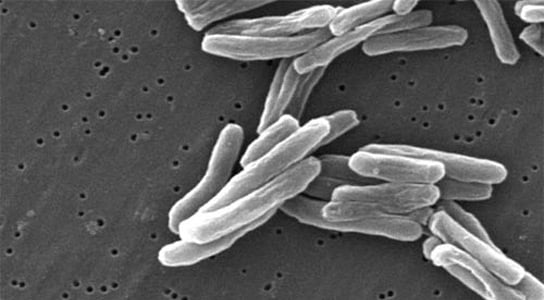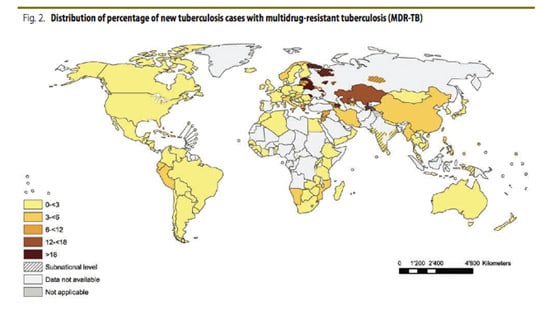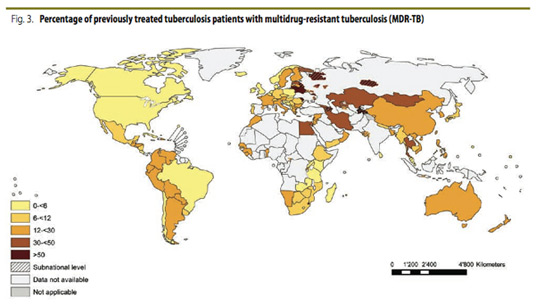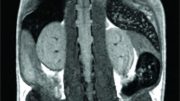
Tuberculosis bacteria
Today the World Health Organization has released an updated report on the situation of drug-resistant tuberculosis around the world, and it’s reporting that drug-resistant TB rates are the highest ever recorded.
The first-line drugs to treat TB take about six months to eradicate the disease, while the second-line drugs can take as long as two years. The higher rates can be explained by the failure of good primary care to prescribe the drugs properly and monitor how they are being taken, the presence of counterfeit drugs on the market, and the unpleasant side effects of the said drugs.

Multi-drug-resistant TB is unaffected by the first-line drugs and extensively drug-resistant (XDR) TB is not susceptible to the first-line drugs and some of the second-line drugs. The new WHO report states that MDR-TB has now been identified in 80 countries, while XDR-TB has been found in 77. 19.8% of MDR patients were previously treated for TB. 3.4% were never treated before and 9.4% of all resistant cases are XDR.

MDR that develops in a previously-treated patient represents a failure of treatment. They didn’t take the drugs, weren’t able to get them or got counterfeit ones. The TB strain persisted and was strengthened by being exposed to the antibiotics. First time MDR-TB patients got infected by other MDR-TB patients. XDR in any patient is considered an emergency.
The proportion of treated cases that become MDR is 51% in Belarus, 60% in Lithuania, 65% in Moldova, and 26% in China. In Estonia, 19% of all MDR cases are now XDR. In India and Russia, cases are only reported on a local level and most of Africa lacks the infrastructure to measure resistance to TB.









Be the first to comment on "Highest Recorded Rates of Drug Resistant Tuberculosis"